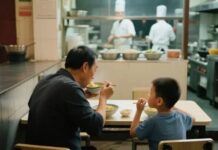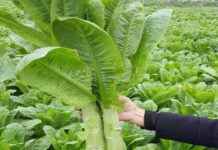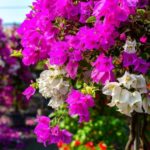The ancient kings of Vietnam paid great attention to the orientation of their capital cities, taking into account principles of yin and yang, the five elements, and the I Ching. The Hue Imperial City, a famous heritage site that attracts many tourists each year, is no exception. Construction of the Hue Imperial City began during the reign of King Gia Long, the founder of the Nguyen Dynasty.
In 1802, after defeating the Tay Son, Nguyen Phuc Anh ascended the throne as King Gia Long. He chose Hue as his capital and began construction of the Hue Imperial City. The city was built on the land of several villages, including Phu Xuan, Van Xuan, Dien Phai, An Van, An Hoa, An My, and The Lai, with the village of Phu Xuan lying entirely within the boundaries of the new capital.

Hue Imperial City, Built During the Reign of King Gia Long
To make way for the new capital, King Gia Long relocated the local population, providing 30 acres of rice fields, three plots of land for housing, and 1,000 coins to assist the people of Phu Xuan. The residents of the other seven villages each received three taels of silver per household and two taels for each grave that had to be relocated.
The Hue Imperial City covers an area of 520 hectares, with a perimeter of 9,889 meters. King Gia Long was meticulous in compensating the people for their houses, fields, and graves to ensure their peace and support for the new capital. This large-scale relocation was carried out thoroughly and urgently over a period of two years, and included the relocation of about 10,000 ownerless graves to the Ba Don cemetery.
The Unique Orientation of the Imperial City
King Gia Long chose the 9th of May, 1804, to begin construction on the inner citadel (the inner enclosure of the Imperial City), with a total perimeter of 1,229 meters for its four sides. The brick walls were built to a height of 3.68 meters and a thickness of 0.72 meters.
Traditionally, the southern direction is favored for palaces and residences due to its association with warmth and positive energy. However, the Hue Imperial City faces southeast, a direction that may seem unconventional at first glance. Was this a disregard for traditional feng shui principles?

The Southeast Direction is Optimal for the Hue Imperial City’s Feng Shui
On the contrary, King Gia Long was likely a master of feng shui and made a deliberate choice based on the unique geographical features of the area. The mountains surrounding Thua Thien, including the Truong Son range and those near the capital, such as Bach Ma, run in a northwest-southeast direction. Taking this into account, the southeast orientation of the Hue Imperial City is the optimal choice.
In feng shui, the front of a building is associated with the element of fire, the left side with metal, the right side with wood, and the back with water. The arrangement of the palaces and temples within the Hue Imperial City follows these principles, taking into account the natural environment and the five elements to create balance and harmony.
From a feng shui perspective, the west side is associated with the master, the east side with the mistress, friends, servants, and valuables, and the back with descendants, students, loyal ministers, and generals. The arrangement of the palaces, temples, and other structures within the Imperial City, the Royal Citadel, and the Forbidden Purple City follows these principles, with specific functions assigned to different areas.
Surrounded by water on all sides, the Hue Imperial City is considered a prosperous and wealth-accumulating site. However, the west side, associated with the king, faces the Truong Son mountains and the winding Huong River, resulting in a strong metal element that can be harmful to the wood element associated with the east side. To counter this, the king built the Van Mieu (Temple of Literature) and the Thien Mu Pagoda on the west side to create a sense of balance.
King Gia Long’s understanding and application of feng shui principles in the design of the Hue Imperial City demonstrate his deep knowledge and practical wisdom. By choosing the southeast orientation, he ensured the city benefited from the positive energy of the surrounding mountains and the Huong River, creating a harmonious and prosperous environment.
The southeast orientation of the Hue Imperial City also allows it to face the Huong River at an optimal angle, enhancing the city’s feng shui features, including the “ming tang” (bright hall), the green dragon, and the white tiger. The river’s unusual northward flow further contributes to the city’s positive energy, indicating a vibrant and prosperous land.
The surrounding hills and the river’s meandering path create a “water prison” formation, a powerful feng shui feature. The gentle slope of the land towards the city forms a “water prison” where the river bends around, embracing the city and bestowing it with good fortune. The city’s location in this “water prison” formation is considered an excellent feng shui site for a capital city.
The Hue Imperial City’s design also incorporates defensive strategies, utilizing the natural protection offered by the mountains and the river. The combination of these natural features and the city’s orientation creates a harmonious balance, ensuring the prosperity and longevity of the capital.
Balancing Yin and Yang in the Imperial City
The Hue Imperial City was also designed with a focus on balancing yin and yang, following the principles of the five elements. Temples, shrines, and other religious structures are predominantly located on the west side of the city, both inside and outside the walls. Outside the city, there is the Hon Chen Temple, the Khai Thanh Tu (dedicated to the father of Confucius), the Temple of Literature, the Temple of Martial Arts, the Thien Mu Pagoda, and the Trung Hung Cong Temple.
Within the Imperial City, on the west side, there is the Xa Tac Temple, the Do Thanh Temple, and the Am Hon Temple, indicating the presence of a spiritual realm coexisting with the living. This arrangement reflects the traditional practice of allocating space for the worship of ancestors and the deceased, an important aspect of imperial city planning.
The construction of royal tombs in the west and southwest, along the upper reaches of the Huong River, further contributes to the unique character of the Hue Imperial City. This urban model achieves a harmonious balance between yin and yang, with the yang aspect represented by the Imperial City and the commercial areas to the east, and the yin aspect represented by the royal tombs, temples, and shrines to the west and southwest. The Huong River serves as a soft axis, connecting these two parts.
The feng shui of the Hue Imperial City, with its unique orientation and attention to the natural environment, has intrigued generations of scholars and continues to be a subject of fascination and study.
The Feng Shui Master’s Warning: 5 Types of Condos to Avoid, Even if They’re a Steal
The importance of good feng shui in apartment living cannot be overstated. Choosing an apartment with poor feng shui can have a detrimental effect on the financial fortune of the occupants. In fact, there are five types of apartments that should be avoided at all costs, even if they seem like a bargain.
“The Benefits of Adorning Your Home’s Exterior with a Majestic Bougainvillea”
Is it auspicious to plant bougainvillea in front of the house? This is a question that has been on many people’s minds, and now, we will reveal the secrets to unlocking the answers. With our expert tips and tricks, you’ll be able to make an informed decision about adding this vibrant plant to your home’s exterior. Stay tuned as we explore the fascinating world of feng shui and uncover the mysteries behind the bougainvillea’s impact on your life and fortune.







































